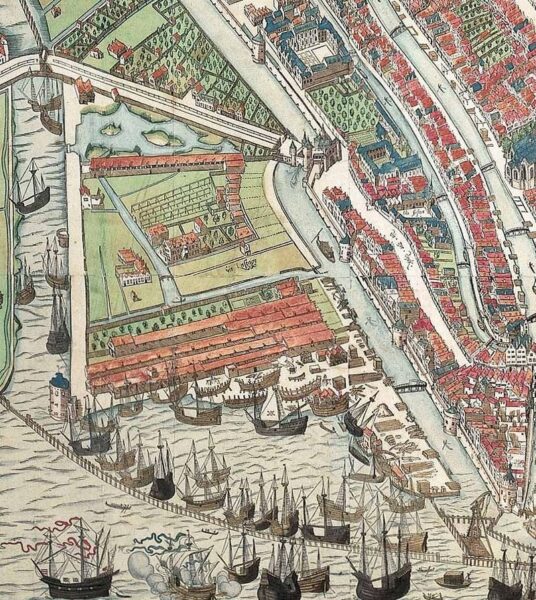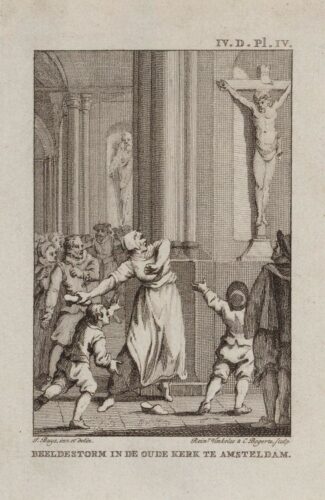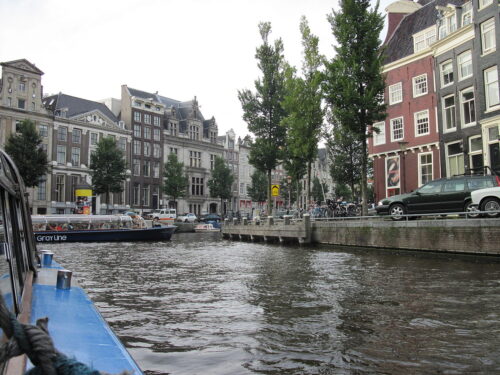Early Adulthood



The son of Philip the Handsome, Charles V, born in the Flemish city of Ghent in the year 1500, inherits his father’s Burgundian territories in 1506. Charles V would be one of the most powerful European monarchs in history, being the heir of three of Europe’s leading dynasties, the House of Habsburg, the House of Valois-Burgundy & the House of Trastámara.
With the gradual outward expansion of the city, the old defensive canals would prove to be extremely useful for transferring sea freight, with the ships reaching the core of Amsterdam depending on the shipment. Amsterdam became one of the most important warehouses in Northern Europe. At the same time, the marshy land east of the Geldersekade (the Nieuwmarkt area today) developed into a large shipyard.


The Burgundian treaty of 1548 which came after the French loss of the French Flanders in the Schmalkaldic War, organised the Burgundian territories of the Netherlands into one administrative and judicial unit, independent from the rest of the empire. The mighty Habsburg ruler ratified the treaty with a Pragmatic action in 1549 which established the Seventeen provinces later known as the Low Countries. The provinces would be a separate entity from the Empire & France, a united state that would be inherited by a single monarch.


Upon Charles V‘s abdication in 1556 his son Philip II, born & raised in Spain, became King of Spain & inherited the Seventeen Provinces. Charles had ruled from Brussels, he had been born in Flanders and spoke the language. The new emperor did not. Philip’s decision to move his seat from Brussels to Madrid would widen the rift between him and his subjects in the Seventeen Provinces.
Raised as a devout Catholic and tutored by the Archbishop of Toledo at his early age, Phillip II had become a fervent enemy of the constantly growing Protestant movement. He considered himself the chief defender of Catholic Europe. The Iconoclastic fury in 1566, in which hundreds of churches were stripped of their statuary & other religious decoration by the Protestant crowds, in several cities of the Low Countries, incited the immediate response of Philip II & the consequential outbreak of the Dutch Revolt.


![]()
During the first years of the revolt, Amsterdam was under a royal Catholic government. After a series of blockades and a siege that lasted three months, the royalists were forced to surrender Amsterdam to the army of William of Orange at the end of 1577. A treaty of reconciliation was signed between Amsterdam and the rest of the revolted states but the ruling elite continued to be Catholic.
That would change on 26 May 1578 with the so-called Alteration (Alteratie) a new peaceful revolt this time by Amsterdam’s protestant bourgeoisie, which managed to depose its Catholic government. Soon after Amsterdam joined Holland and the rest of the northern protestant provinces that had started the Dutch Revolt. The so-called Union of Utrecht would later evolve into the independent state of the Netherlands.


In 1584 a big army sent by the Spanish King Phillip II captures most of the revolted provinces in the south, among them Antwerp, the most important city of the region at the time. The captured Protestant citizens of the conquered provinces were given 2 years to settle their affairs before quitting their homes. Most of them headed north where they would play a great part in the Dutch Golden Age that would follow. From then on, Amsterdam would be the new economic Mecca of the Low Countries.
Large Jewish populations, along with wealthy and educated Protestant merchants, craftsmen & printers sought for a haven that would provide them religious & intellectual tolerance along with the prospect of a more liberal economic operation. Amsterdam would offer them just that. What followed in the North and South was portrayed most vividly in the numbers of the general population of the different cities. While in Antwerp the number fell to 47.000 in 1600, from 140.000 in 1560, in Amsterdam the population doubled from 30.000 to 65.000.



In 1596 the Dutch, motivated by the new wealth created in the independent cities of the north, the suspension of Portugal’s naval trade with the east, after the country’s annexation by the Spanish Empire & the blockade of Antwerp, organize a commercial trip to Indonesia that is proved to be extremely lucrative.
Inspired by the results, Amsterdam’s merchants start financing more expeditions to the East and the New World. They proceed in the foundation of the Dutch East India Company in 1602 & the Dutch West India Company in 1623. East India Company would be the very first multinational corporation in the world, in which Amsterdam’s merchants had of course the biggest share, a norm (shares) that was also introduced for the first time.



17th century was the golden age of Netherlands and Amsterdam was at the center of it. The city became a world trade center with commodities from all the corners of the world & shipments heading to all ports of Europe, the far east and the Americas. The city’s population increased rapidly and the construction of new canals along with the characteristic slim & high houses on their banks started giving the city its famous picturesque shape.



Business for the Dutch was going so well that by 1670 the size of their merchant fleet probably exceeded the combined fleets of England, France, Spain, Portugal, and Germany. Many of these ships were produced in Amsterdam’s shipyards, all of them docked in one of the quays and piers of the canal-shred city.



